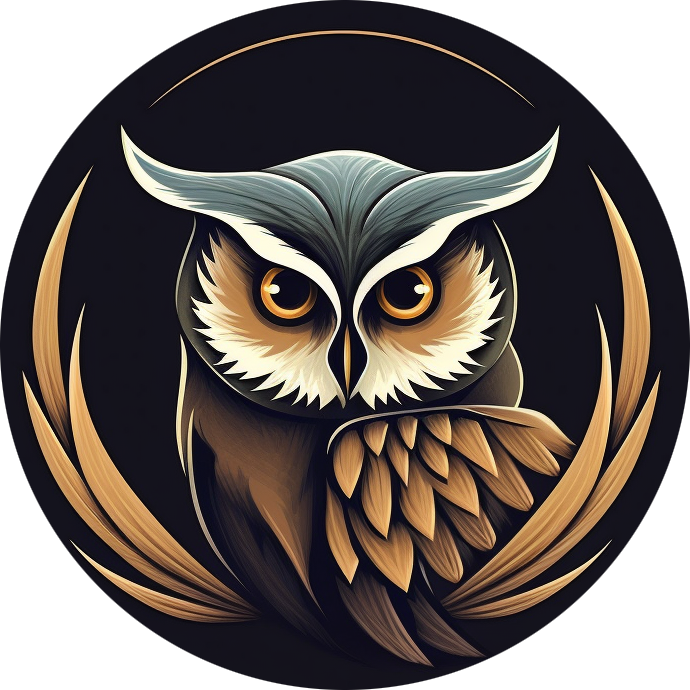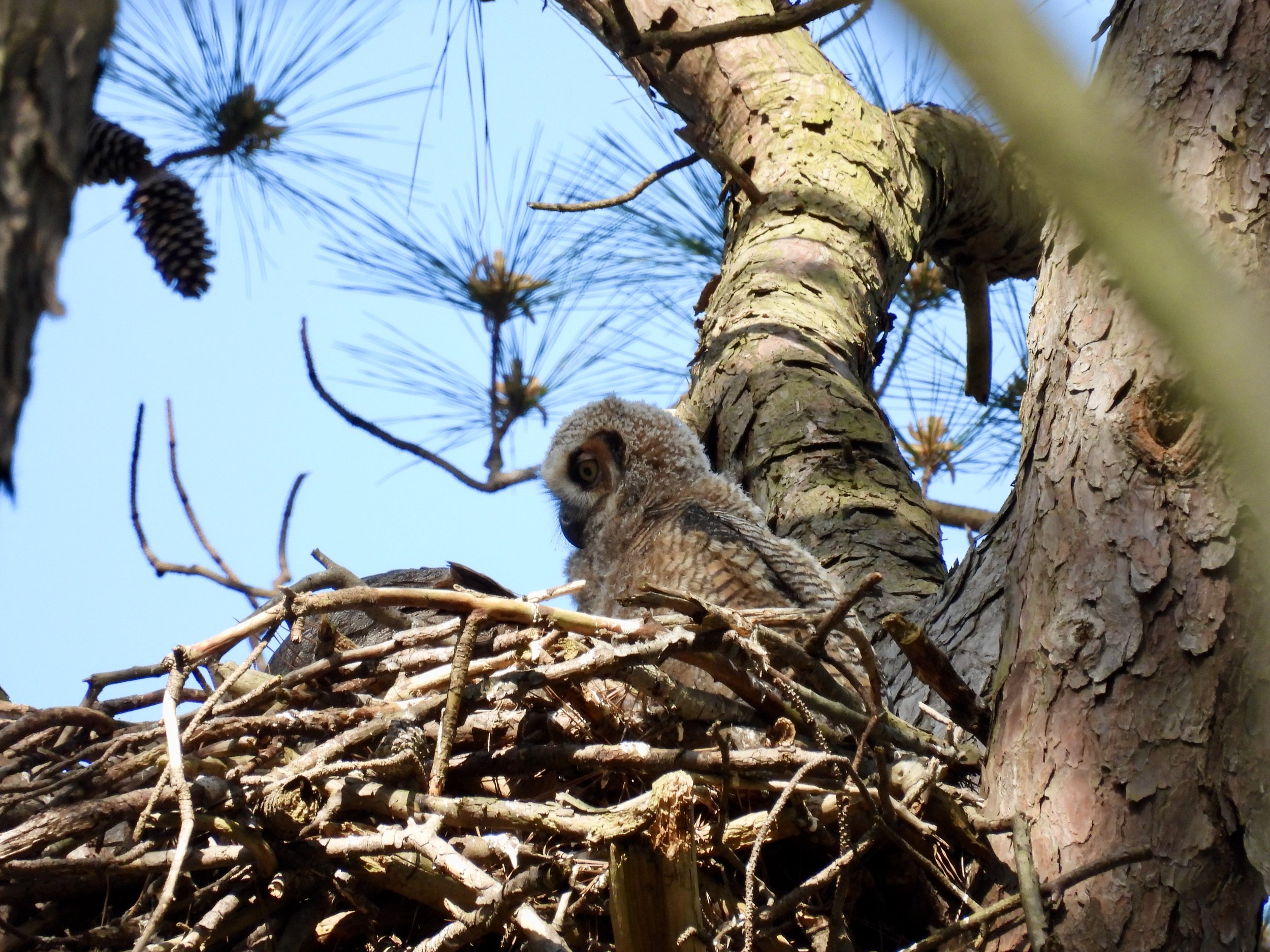Nestlings
Segment 4
Development
“Miraculously between the days 19 and 21 after hatching both birds are the same in development.”
“Their eyes open at 9 and 10 days.”
“Ear tuffs start coming at roughly 10 to 14 days.”
-
Next, Judy will talk about nestlings, beginning with development.
Why the eggs hatch two days apart, or three, or sometimes even four days apart, is that at least one of the chicks has a head start.
So that if it's a very lean year and both chicks cannot be supported, at least one of them will make it off the nest.
But let's jump back to both these birds hatched.
Both of them are healthy.
One's a little bigger than the other because of development, and as a result, they will grow at a different rate, feather-wise, size-wise, but miraculously, in nature, and we really don't know why this happens.
Maybe somebody more knowledgeable about owls than me knows, but I have not seen it in any studies.
Miraculously, between the days 19 and 21, after hatching, both birds are the same in development.
They both made it feather development-wise.
There was ample food.
There's not any kind of disabilities, etc.
So let's go back to the hatching again.
They hatch.
They're white.
They're fuzzy.
No feathers, covered primarily with down.
Within about a third of their 30 days, so we're looking at 10 days, they become more feathered out.
Their eyes open at 9 and 10 days, and they're already pushing feathers behind the down, and they're starting to, they still have a lot of down, but they're starting to look like a bird instead of a ball of fuzz.
As a result, the feather development occurs extremely rapidly.
A couple of quick hits here.
Eyes open, roughly 9 to 10 days.
Ear tufts start coming roughly 10 to 14 days.
Facial disc appears roughly 15 days.
Very rapid development.
The more food, the more rapid the development.
They begin to stand a little bit at about 12 days.
Otherwise, they're on the hocks.
That means that they can't bear their weight fully, so they're crawling around, waddling around the nest on their hocks.
That means their legs are bent.
But about 12 days, they begin to stand up.
Now their eyes are open, so now their world is expanding.
If it's a very shallow nest, they're able to look out into the surrounding area.
If it's a deep cup, they still can't see over the edge of the nest.
But if you're lucky enough to locate an owl's nest, they do bobble and hop a little bit at that time.
You might see little white heads bobbing up and down in the nest site.
After that, the babies begin to have some more strength.
We're talking like after 15 days.
They'll begin to kind of toddle around the nest a little bit when the mom's not on with them, but she's always watching them.
They'll begin to be more alert to their surroundings, particularly their sibling.
They'll begin to pick at feathers because it's very itchy for them when they're getting feathers because it's pushing the down out.
So they'll start to pick at feathers.
If they're doing it to themselves, we call it preening.
If they're doing it to their sibling, I don't know what we call that, bickering I guess.
But anyway, they become a little bit more active.
And by 20 days, you should be able to see the babies.
They should be about, I'm guessing at this, about 10 inches tall.
So they're starting to stick up over the rim of the nest.
And look around.
They're always looking, where's mom with the food? And they begin to look more like owls than balls of fuzz.
One last note on development.
I keep mentioning about 19 days to 21 days is usually the age where their talons are pretty well developed.
In fact, if banding is going to occur, putting the fish in wildlife aluminum bands on, usually the days 19 to 21 are good days because their legs are just about full size.
Band can't slip down and cover the toes.
So right away, that development of beak and feet is pretty obvious when you see them in that range from 19 to 20, 21 days.















